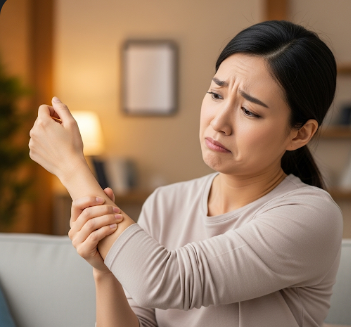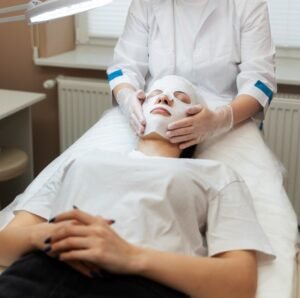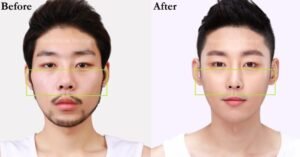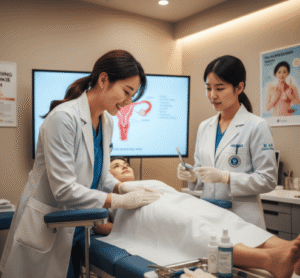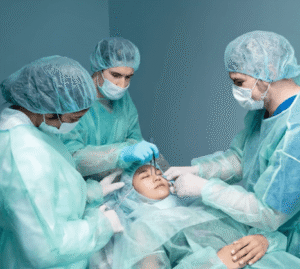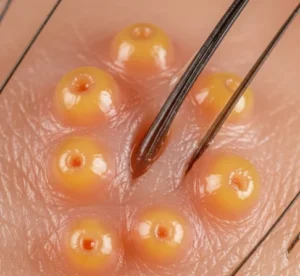Overview
Pins and needles, medically referred to as paresthesia, is a tingling, prickling, or numbing sensation often felt in the hands, feet, arms, or legs. People commonly describe it as feeling like tiny needles pricking the skin or a “falling asleep” sensation. While it is often temporary and harmless, persistent or recurrent pins and needles may indicate nerve compression, neurological disorders, or systemic conditions.
In Korea, advanced neurology, orthopedics, and rehabilitation centers provide comprehensive evaluation and treatment for paresthesia, helping patients identify underlying causes, manage symptoms, and prevent complications.
➤ Tingling, prickling, or numbing sensations in the extremities
➤ Can be temporary or persistent
➤ May indicate nerve, spinal, or systemic conditions
Key Facts
➤ Pins and needles are often temporary and resolve after repositioning or relief of pressure on a nerve.
➤ Chronic or recurrent paresthesia may result from nerve damage, diabetes, vitamin deficiencies, or circulation problems.
➤ Commonly affected areas include hands, feet, arms, and legs.
➤ Symptoms may be accompanied by weakness, pain, or loss of coordination.
➤ Korean hospitals offer diagnostic tests, nerve conduction studies, and treatment programs to manage and alleviate symptoms.
What is Pins and Needles?
Pins and needles (paresthesia) is the sensation of tingling, prickling, or numbness in the skin, often without obvious external cause. It can be categorized as:
➤ Transient Paresthesia: Temporary sensation caused by pressure on nerves or restricted blood flow.
➤ Chronic Paresthesia: Persistent or recurrent sensation due to nerve injury, neuropathy, or systemic illness.
➤ Localized Paresthesia: Occurs in a specific area, like a single finger or toe.
➤ Generalized Paresthesia: Widespread tingling affecting multiple limbs, sometimes linked to systemic or neurological disorders.
What Symptoms Are Related To
Pins and needles may appear alone or with additional symptoms, depending on the cause:
➤ Tingling or prickling sensation in hands, feet, arms, or legs.
➤ Numbness or reduced sensation.
➤ Burning or aching pain in affected areas.
➤ Weakness or loss of grip strength in hands.
➤ Difficulty with balance or coordination if legs or feet are involved.
➤ Skin discoloration or temperature changes in some cases.
➤ Pain that worsens with repetitive movement, prolonged pressure, or certain positions.
What Causes / Possible Causes
Pins and needles can result from a variety of mechanical, neurological, or systemic causes:
➤ Temporary Causes (Benign)
➤ Pressure on nerves from crossing legs, leaning on an arm, or sleeping on a limb.
➤ Restriction of blood flow due to prolonged sitting or compression.
➤ Nerve Compression or Injury
➤ Carpal tunnel syndrome: Median nerve compression causing hand tingling.
➤ Cervical or lumbar radiculopathy: Spinal nerve compression affecting arms or legs.
➤ Trauma or injury to nerves from accidents or repetitive strain.
➤ Neurological Conditions
➤ Peripheral neuropathy: Often due to diabetes or vitamin deficiencies.
➤ Multiple sclerosis: Tingling can be an early symptom.
➤ Stroke or transient ischemic attack (TIA): Sudden paresthesia may indicate urgent neurological events.
➤ Systemic Causes
➤ Diabetes mellitus causing peripheral nerve damage.
➤ Vitamin B12 deficiency leading to nerve degeneration.
➤ Circulatory disorders affecting blood flow to extremities.
➤ Autoimmune or metabolic disorders causing nerve inflammation.
➤ Medication-Induced
➤ Certain chemotherapy drugs, antivirals, or antibiotics can trigger nerve irritation.
When Should I See My Doctor
See a doctor if pins and needles are:
➤ Persistent or recurrent without an obvious cause.
➤ Accompanied by weakness, loss of coordination, or loss of sensation.
➤ Associated with pain, swelling, or skin color changes.
➤ Sudden and affects one side of the body (possible stroke or neurological emergency).
➤ Linked to underlying conditions such as diabetes, autoimmune disease, or vitamin deficiency.
➤ Interfering with daily activities, work, or mobility.
Early evaluation ensures accurate diagnosis, prevents nerve damage, and improves quality of life.
Care and Treatment
Treatment depends on the cause, severity, and duration of pins and needles:
➤ Lifestyle and Self-Care
➤ Avoid prolonged pressure on limbs.
➤ Regular stretching and posture correction.
➤ Gentle exercise to improve circulation and nerve health.
➤ Ergonomic adjustments for workstations and daily activities.
➤ Medical Treatment
➤ Medications: Pain relievers, anti-inflammatories, or nerve-specific medications (gabapentin, pregabalin).
➤ Vitamin supplementation for deficiencies (e.g., B12, folate).
➤ Blood sugar control for diabetic neuropathy.
➤ Physical and Occupational Therapy
➤ Nerve gliding exercises.
➤ Sensory retraining.
➤ Adaptive strategies for daily living if chronic.
➤ Surgical or Interventional Options
➤ Carpal tunnel release for severe nerve compression.
➤ Decompression surgeries for spinal nerve impingement.
Treatment Options in Korea
Korea provides advanced neurology and rehabilitation care for pins and needles:
➤ Top Hospitals for Neurology & Orthopedics
➤ Asan Medical Center (Seoul): Comprehensive nerve diagnostics and minimally invasive interventions.
➤ Samsung Medical Center: Electromyography, nerve conduction studies, and surgical treatments.
➤ Seoul National University Hospital (SNUH): Multidisciplinary care for neuropathy and spinal disorders.
➤ Yonsei Severance Hospital: Rehabilitation programs, physical therapy, and advanced interventions for chronic paresthesia.
➤ Advanced Diagnostic Tools
➤ MRI and CT scans for spinal or brain evaluation.
➤ Nerve conduction studies and electromyography (EMG).
➤ Blood tests for metabolic or vitamin deficiencies.
➤ Modern Interventions
➤ Minimally invasive nerve decompression.
➤ Medication-guided neuropathy management.
➤ Physiotherapy, occupational therapy, and rehabilitation programs.

